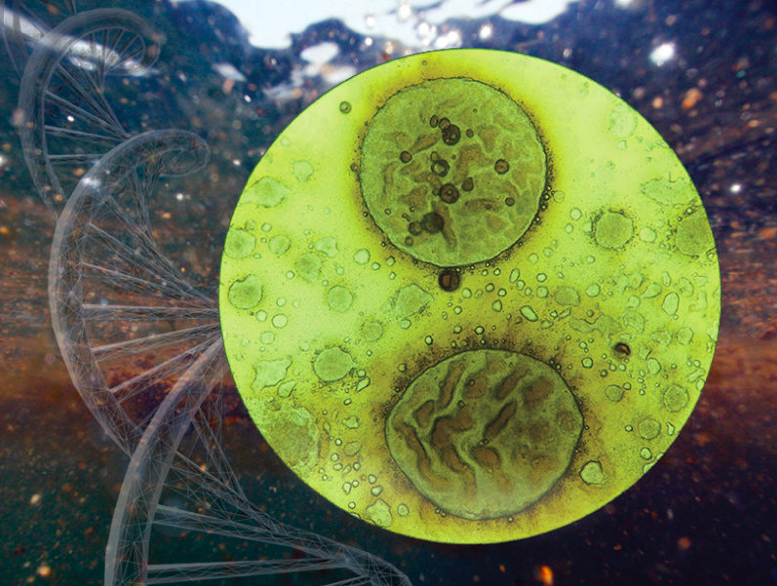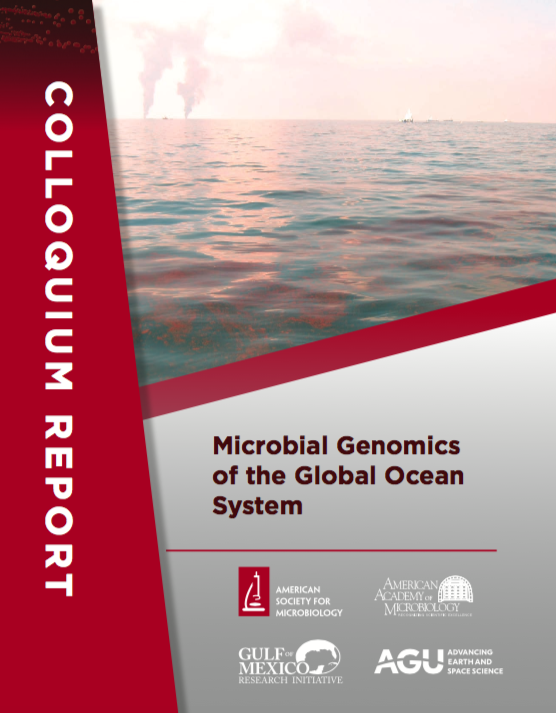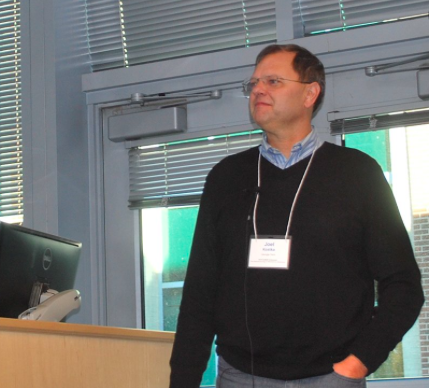Ten years on, the Deepwater Horizon ecological disaster remains one of the largest natural disasters in modern history. Yet it has offered one silver lining to science, as advances in technology in the ten years since Deepwater — particularly the field known as omics — have allowed School of Biological Science Professor Joel Kostka and other researchers to learn more than ever before about the microbial ecology of the world’s oceans.
That knowledge is now available in the form of a joint colloquium report, Genomics of the Global Ocean System. Kostka (also the School’s associate chair of research) and University of Georgia Professor Samantha Joye are co-authors of the report, written for the American Academy of Microbiology, an honorific branch of the American Society of Microbiology. Fellow researchers in the Gulf of Mexico Research Initiative and the American Geophysical Union also collaborated on the report.
“The report highlights new research tools, methodology, data resources, collaborations, and models that will advance basic and applied research to provide data-driven solutions to environmental challenges,” the report says in its executive summary. “Beginning in 2010, the development and application of genomics and bioinformatics tools enabled researchers, for the first time, to identify and examine individual microorganisms within their complex communities in unprecedented detail. Today, technical advances and new discoveries reveal a natural capacity of microbes in the Gulf of Mexico to catalyze bioremediation of petroleum hydrocarbons. This knowledge is critical to guide mitigation and restoration strategies that build on microbes’ natural bioremediation capabilities without further disturbing sensitive ecosystems.”
The Rise of Omics
On April 20, 2010, an explosion on British Petroleum’s Deepwater Horizon marine oil platform killed 11 workers and sent 60,000 barrels of oil a day streaming into the Gulf of Mexico. The resulting 57,000 square-mile oil slick damaged more than 1,000 miles of shoreline.
In the report, Kostka and Joye list the "omics" that helped all the researchers involved expand their knowledge of the ocean’s microbial community, and how it responds to disasters like the Deepwater Horizon spill. Some of the omics include:
- Genomics – This accounted for faster and much less expensive gene sequencing of microbes, and showed scientists how those microbes fit into ocean ecology, such as their natural ability to break down polluting hydrocarbons.
- Metabolomics – The use of nuclear magnetic resonance imaging (nMRI) and high-resolution mass spectrometry yielded “metabolite fingerprints” that revealed how microbes were interacting with each other.
- Transcriptomics – Changes or differences in RNA sequencing showed how certain microbes responded to ecological threats such as oil spills.
- Proteomics – Mass spectrometry of the protein inside cells showed clues about protein “on/off switches,” which can dramatically alter cellular functions.
Discovering New Oil-Eating Microbes
In the section of the report titled Meet the Microbes, Kostka and Joye write that the omics tools led to discoveries of new organisms that help to clean up oil-contaminated marine environments. “Omics snapshots of the entire community illuminate metabolic pathways and ecosystem functions accomplished by cooperative microbial communities that would be overlooked by examining only individual species or small RNA gene sequence data.”
The tools also showed new hydrocarbon-degrading abilities of other microbes. “Major known classes of microbes, like Bacteroidetes, have been found to harbor a previously unknown potential for hydrocarbon biodegradation.
“Many major players and ecotypes have been discovered, but we have only scratched the surface in identifying microbes involved in hydrocarbon degradation. There are vast worlds yet to uncover, and the search continues for those that remain hidden, with new additions to the community being discovered frequently.”
Read the full report: Genomics of the Global Ocean System
Kostka wrote about early findings from this report in the April 2020 edition of Eos, the AGU’s research magazine. Read about our coverage of that story here.
For More Information Contact
Renay San Miguel
Communications Officer
College of Sciences
404-894-5209





